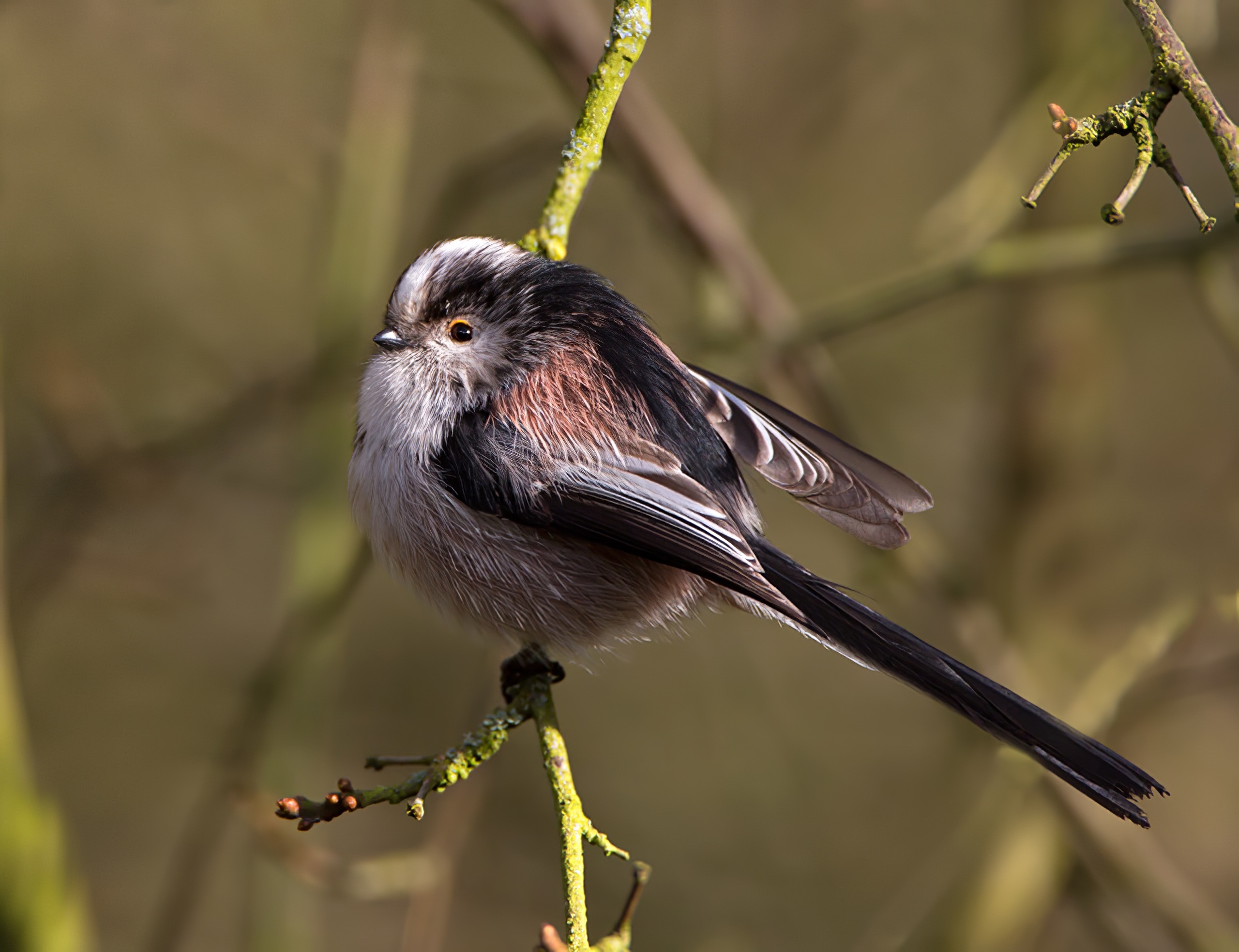Long-tailed Tit Aegithalos caudatus
British subspecies rosaceous a common resident and partial migrant.


The Long-tailed Tit is known for its vulnerability to hard winters, but the population can spring back relatively quickly. The Atlas estimated there were between 3,000-6,000 pairs in Lincolnshire in the late 1980s and the species was thought to be increasing. It continued to spread and in the BTO Atlas of 2007-2011 it occupied the 9 coastal 10km squares from which it had been hitherto absent. The spread may have been caused by a run of mild winters that allowed the population to grow and together with an increasing tendency to feed in gardens during the winter. This is reflected in the results of the GBFS up to 2012 as reported by Goodall in the LBR 2011. Unfortunately, Long-tailed Tit was not sufficiently common throughout the period to produce a reliable long term Lincs BBS index. APEP4 adjusted, estimated a population of 8,000 pairs in 2016. However, following the “Beast from the East” which struck in March 2018, Lincs BBS results showed Long-tailed Tit had decreased by o total of 27% over the 5 years from 2013-2018 although it had recovered by 7% in 2019. Over the years there are many records of winter flocks of 20 or more birds in LBR. The year 2012 was an exceptional one and in the winter there were flocks of 84 at Whisby NP and 64 at Far Ings NR in January; in the autumn 87 were at Gibraltar Point July 26th, and 58 at Haverholme Park in October.
Very few birds move more than 100km, but there are several recoveries of birds ringed elsewhere and retrapped in the county, all at coastal sites Gibraltar Point and Saltfleetby-Theddlethorpe NNR and originating in Oxfordshire (1), Northamptonshire (2) and Suffolk (2). Four were trapped in September-November, one in March. Local riging recoveries also indicate that family parties frequently remain together. Lorand and Atkin (1989) rpeoted a family of seven trapped at Donna Nook in October 1967 were retrapped at Gibraltar Point four days later, and they list several other similar examples. There have been no reports over the years of the nominate white-headed subspecies caudatus of northern and eastern Europe. This is a national rarity assessed by BBRC and it averages just two UK records a year.
(Account as per new Birds of Lincolnshire (2021), included October 2022)
